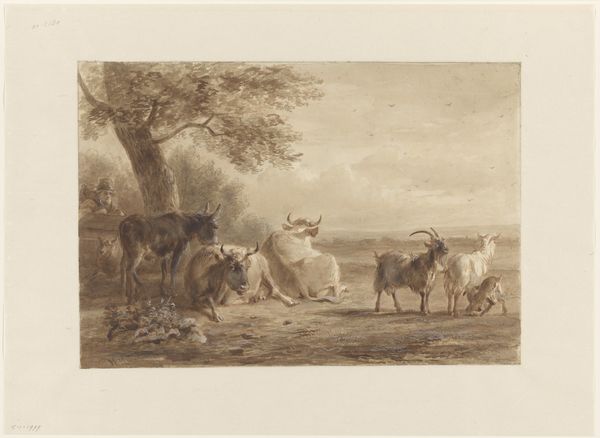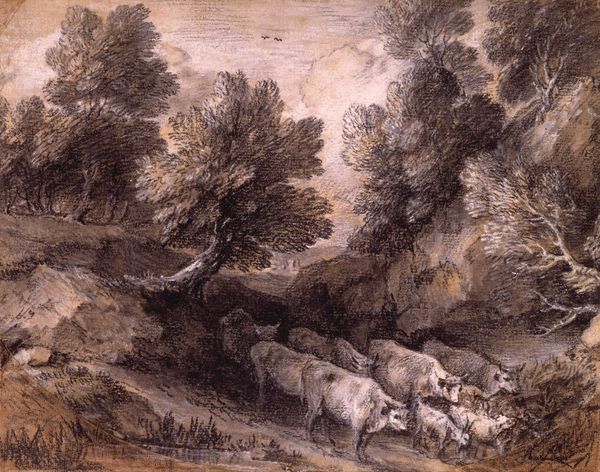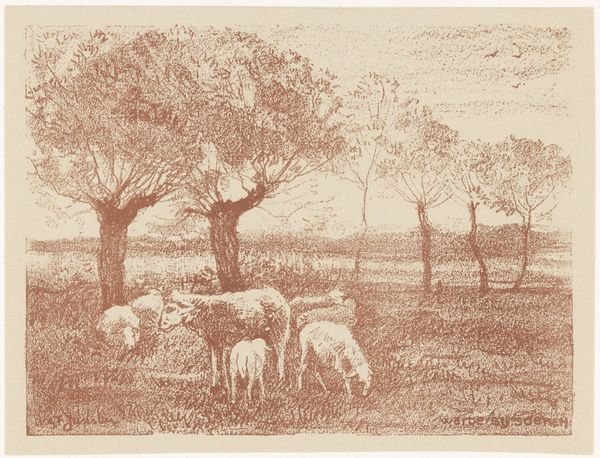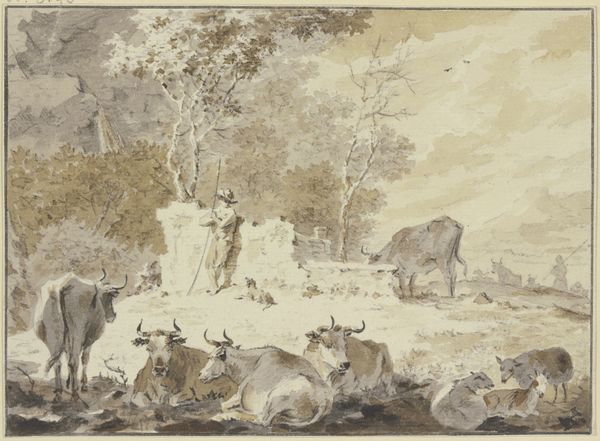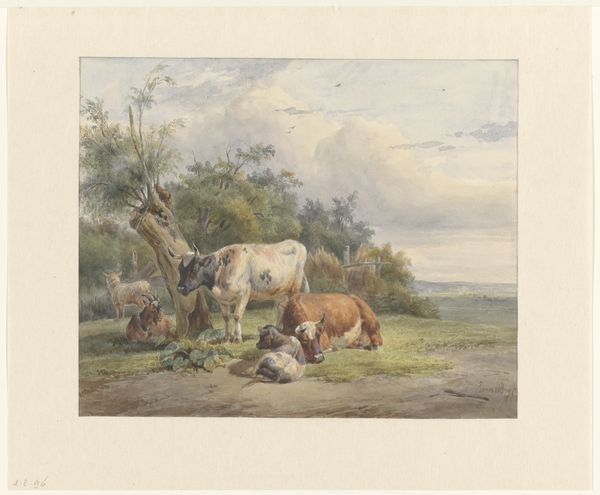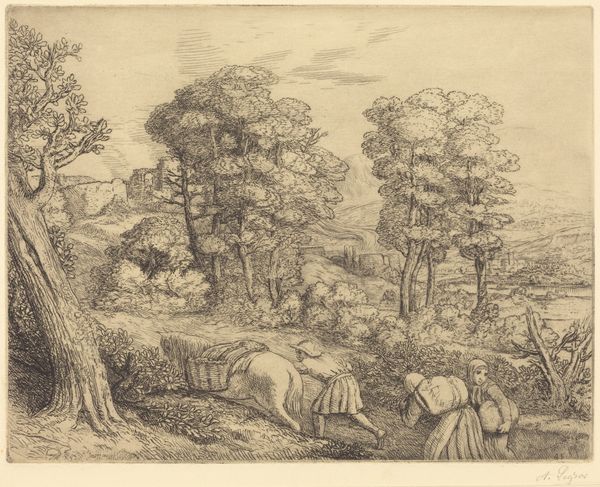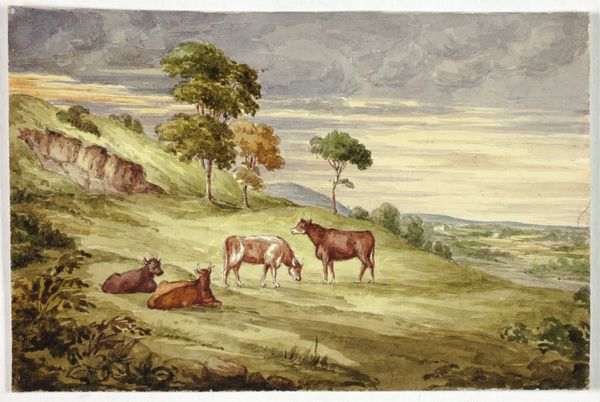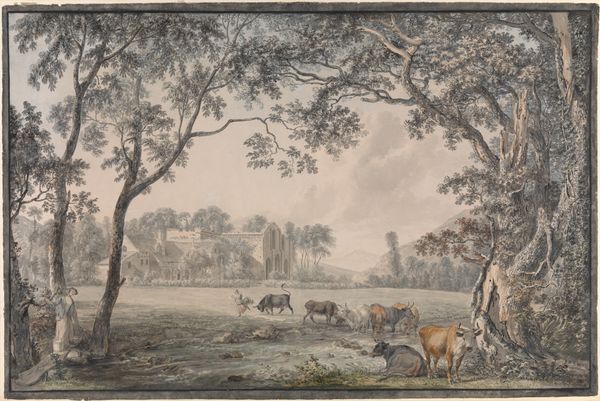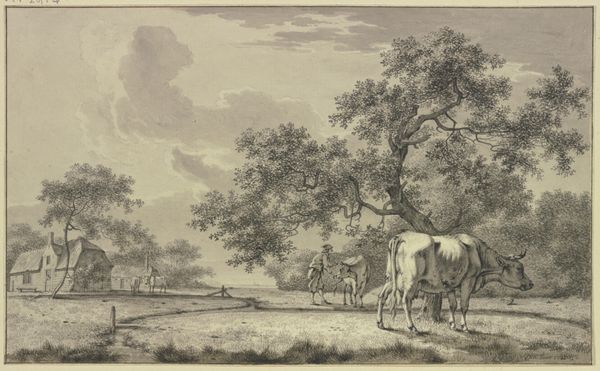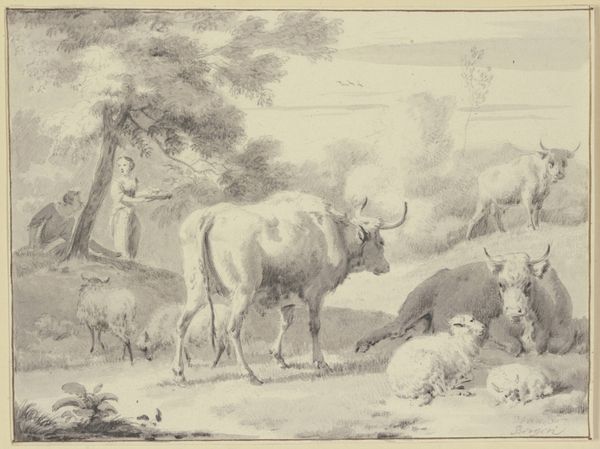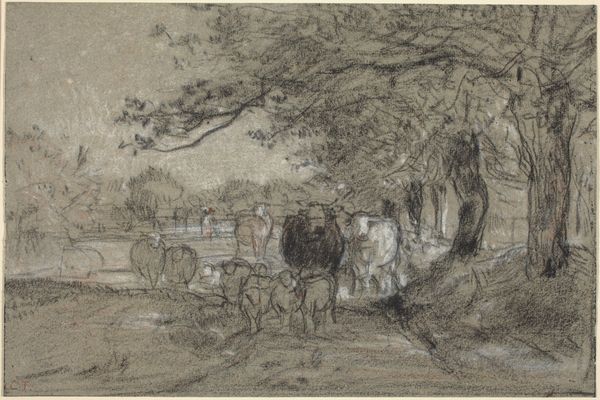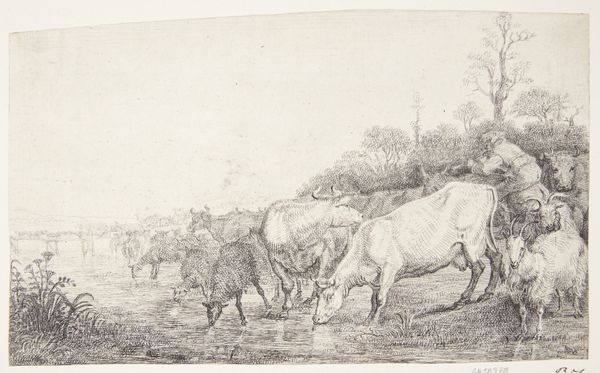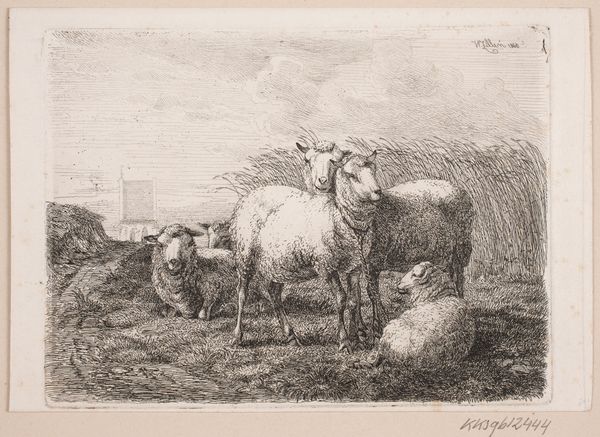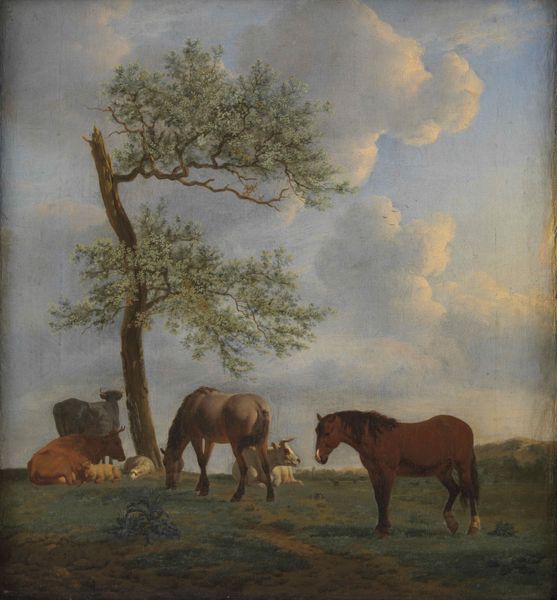
drawing
#
drawing
#
baroque
#
landscape
#
genre-painting
Dimensions: 7 1/2 x 10 3/8 in. (19.1 x 26.4 cm)
Copyright: Public Domain
Curator: There’s a certain melancholic calm to this drawing, don’t you think? The monochrome brown wash gives it such a muted, earthy quality. Editor: It’s incredibly evocative. What we're looking at is Claude Lorrain's "Landscape with Sheep" from 1648. Lorrain, of course, was a master of the Baroque landscape, profoundly influential in the way we perceive the relationship between humanity and nature in art. He was especially popular among British collectors. Curator: Yes, its appeal lies in its idealized vision of rural life, but I always think we must be mindful of the labor behind such idyllic imagery. Who actually benefits from that portrayal, and whose work sustains it? What did it mean to render this type of scenery at this historical juncture? Editor: Precisely. The materiality, in this case a simple drawing, brings its own context. Lorrain worked during a period where pastoral themes served elite audiences eager to overlook realities tied to textile economies dependent on this very livestock. You get to contemplate the weight and feel of sheep's wool by way of what's happening on the land itself. Consider how labor relates to materiality to this end, or how it shapes our understanding of consumption? Curator: Indeed, by focusing almost exclusively on landscape and animals here, Lorrain obscures human labor, thus sanitizing a specific form of labor that allows pastoral scenes to occur in the first place. How different is this romantic view, say, from representations produced from the perspective of shepherds and the women tasked with making sheepskin clothing? This representation reinforces hierarchies. It offers a comforting fantasy to a very particular, affluent demographic. Editor: Right, the labor is unseen and obscured by this dream-like picturesque landscape. Curator: And in some ways, this landscape ideal informs our very notion of 'countryside', particularly within certain cultural imaginations and its subsequent representation in art. I appreciate how art allows us to critically engage with these historical constructs and reimagine other potentials. Editor: I think seeing that tension between idealization and material reality is very fruitful here. Let’s consider the ways our engagement can make apparent the hidden histories and forces within and surrounding pastoral life as well. It underscores how perceptions have been historically curated and who actually shapes representations through labor and power. Curator: A sobering and very necessary viewpoint to appreciate, truly!
Comments
No comments
Be the first to comment and join the conversation on the ultimate creative platform.
